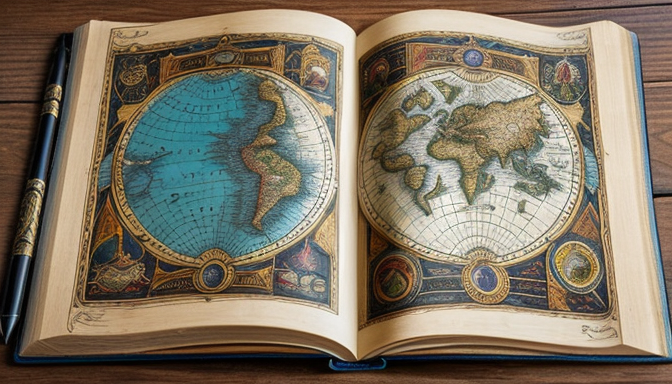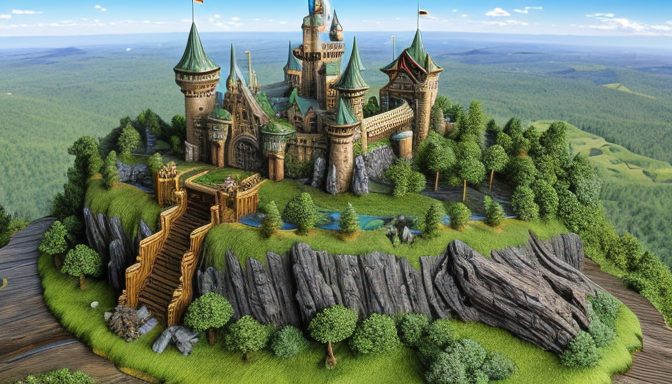Welcome to the enchanting realm of fantasy worldbuilding, where your imagination can run wild! Crafting a fictional universe is like painting on a blank canvas; each stroke adds depth and vibrancy to your story. So, where do you begin? The journey starts with a solid foundation, encompassing everything from geography to politics, mythology, and culture. Think of your world as a living organism, where every element is interconnected, breathing life into your narrative.
First off, let’s dive into geography. Your landscapes can shape the very essence of your story. Are your mountains towering and menacing, or are your forests lush and inviting? Each terrain can influence the culture and lifestyle of its inhabitants. For instance, a society nestled in the mountains may develop a unique set of customs and traditions, born from the challenges of their environment.
Next up is the political landscape. Consider the power dynamics at play. Are there kingdoms at war, or is there a council of wise elders guiding the fate of the land? Establishing a political structure not only adds tension but also enriches your plot. You can create a table to visualize the various factions and their relationships:
| Faction | Leader | Goal |
|---|---|---|
| Kingdom of Eldoria | King Aric | Unite the realms |
| Dark Brotherhood | Shadow Master | Seize power |
Finally, don’t overlook the importance of mythology and culture. Myths can serve as the backbone of your world, providing history and depth. They explain the unexplainable and can guide the morals of your characters. By weaving these elements together, you create a rich tapestry that readers will be eager to explore.
So, roll up your sleeves and let your creativity flow! Remember, the magic of worldbuilding lies in the details. The more you invest in crafting your universe, the more your readers will be drawn into the adventure.
Creating a Unique Setting
When it comes to crafting a fantasy world, the setting is your canvas, and it can be as vibrant and intricate as your imagination allows. Think of it as the backdrop for your characters’ adventures—a place where every mountain, river, and forest tells a story of its own. To create a truly unique setting, you need to dive deep into various elements that will shape your world.
Start with geography. What does the land look like? Are there towering mountains that touch the sky, or perhaps vast deserts that stretch as far as the eye can see? Consider how these features influence the climate and the lives of the inhabitants. For example, a land rich in resources might foster a bustling trade hub, while a harsh environment could breed resilient, hardy cultures. This interplay between geography and culture is crucial.
Next, let’s talk about politics. Every world has its power dynamics. Are there kingdoms vying for control, or perhaps a council of wise elders guiding the fate of the people? Establishing a political structure not only adds depth but also creates opportunities for conflict, intrigue, and drama. Think about how these political entities interact and what tensions arise between them.
Don’t forget to weave in mythology and culture. What stories do the inhabitants tell? What traditions do they uphold? These elements can enrich your world, making it feel lived-in and authentic. A well-developed mythology can serve as a backbone for your plot, influencing everything from societal norms to character motivations.
In summary, creating a unique setting involves a careful blend of geography, politics, and culture. By paying attention to these elements, you can create a world that not only captivates readers but also enhances your storytelling.

Developing Intriguing Characters
When it comes to crafting a fantasy world, your characters are the heart that pumps life into it. Think of them as the vibrant colors on a painter’s canvas, each shade adding depth and dimension to your story. But how do you create characters that not only fit seamlessly into your unique universe but also resonate with your readers? It’s all about depth and relatability.
First off, consider their backgrounds. Just like in real life, a character’s history shapes who they are. Where did they grow up? What experiences have they had that molded their beliefs and desires? For instance, a character raised in a war-torn village might view the world through a lens of caution and survival, while another raised in opulence might struggle with understanding the harsh realities of life. This contrast adds layers and makes them feel real.
Next, let’s talk about motivations. What drives your characters? Are they seeking revenge, love, or perhaps redemption? Understanding their goals not only gives them purpose but also allows readers to connect with them on an emotional level. You can even create a simple table to outline these motivations:
| Character Name | Motivation | Conflict |
|---|---|---|
| Aria | To find her lost brother | Facing a corrupt regime |
| Thorn | To reclaim his family’s honor | Struggling with his dark past |
Lastly, don’t forget to give your characters flaws. Perfection is boring, and flaws make them relatable. Perhaps they’re overly ambitious, leading to poor decisions, or maybe they struggle with trust issues. These imperfections create conflict and drive the narrative forward, keeping readers engaged and invested in their journeys.
So, as you dive into character development, remember: your characters are not just players in a game; they are the soul of your fantasy world. By giving them rich backgrounds, clear motivations, and relatable flaws, you’ll create characters that leap off the page and linger in the minds of your readers long after they’ve turned the last page.
Frequently Asked Questions
- What is worldbuilding in fantasy writing?
Worldbuilding is the process of creating an immersive and believable universe for your story. It involves developing unique landscapes, cultures, and societies that enhance the narrative and engage readers.
- How can I create a unique setting?
To create a unique setting, think about the geography, history, and culture of your world. Consider the climate, terrain, and how these elements influence the lives of its inhabitants. Don’t forget to add details that make your world feel alive!
- What makes a character compelling?
A compelling character often has depth, relatable emotions, and clear motivations. They should face challenges that reveal their true selves, making readers root for them. Remember, a character’s flaws can be just as interesting as their strengths!
- Can I mix different genres in my fantasy world?
Absolutely! Mixing genres can create a fresh and exciting narrative. Just ensure that the elements blend well together and serve the story you want to tell. Think of it as adding spices to a dish—balance is key!

Recent Comments